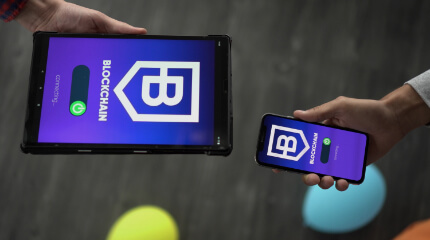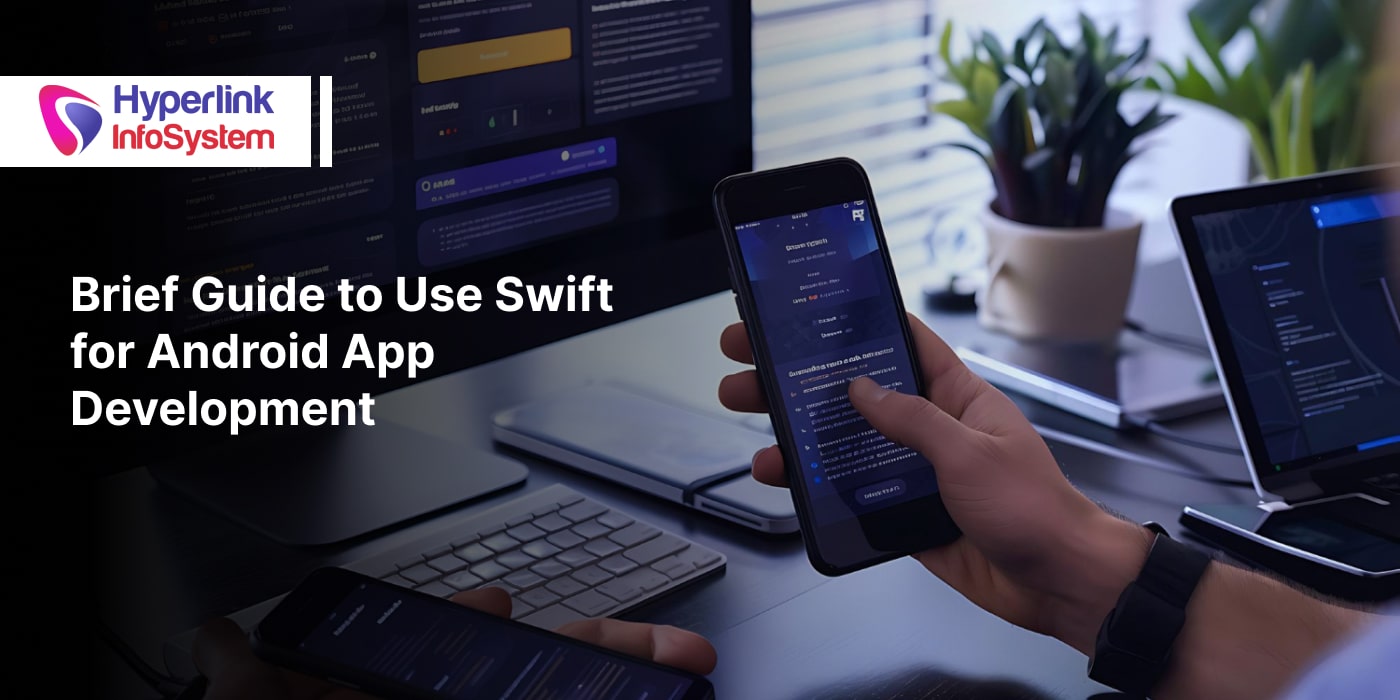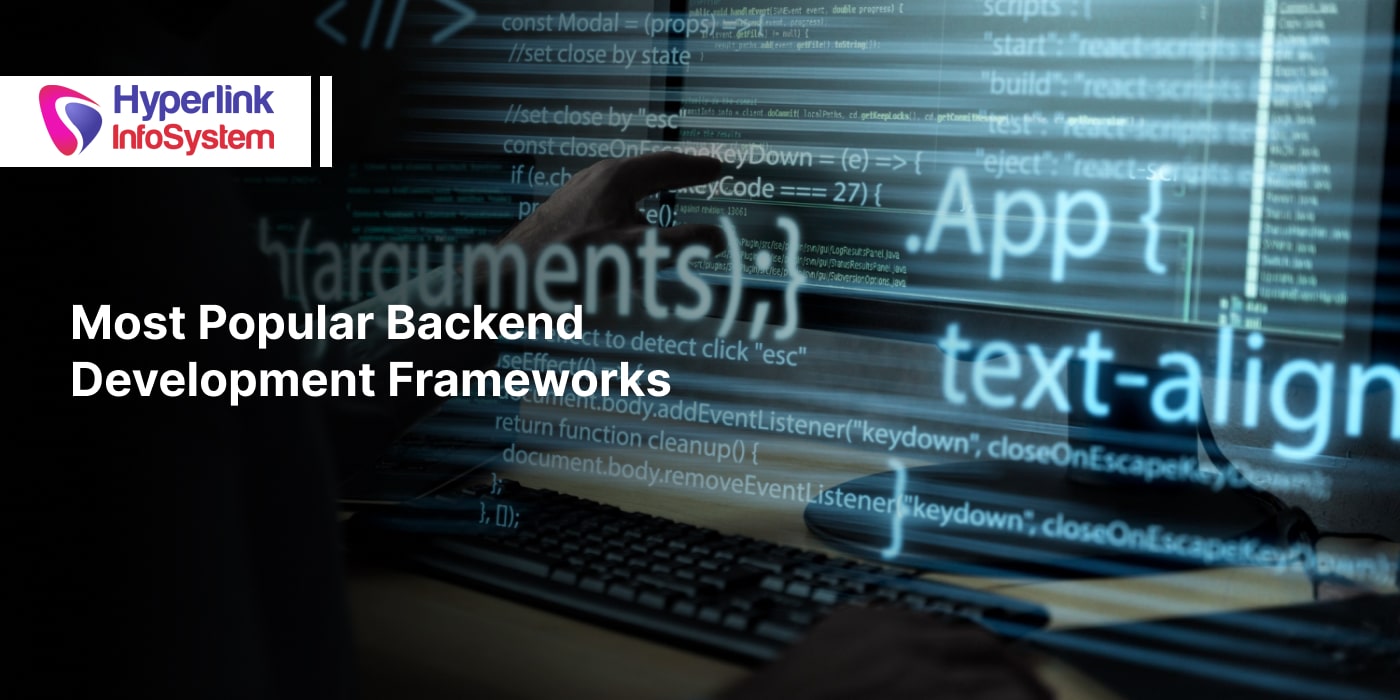Amazon Bedrock Vs ChatGPT: A Side-By-Side AI Tool Comparison
Sep 2025

This blog offers a comprehensive comparison between Amazon Bedrock and ChatGPT, encompassing features, performance, integration, and a feature-by-feature analysis, among other aspects. Understanding these aspects will enable businesses, developers, and other professionals to determine which option is best suited for their needs.
Why Compare ChatGPT and Amazon Bedrock?
Not too long ago, AI was just a buzzword until ChatGPT made its grand entrance in 2022. While the core concepts of AI have been around since the 1980s, it wasn't until 2021 that large language models came into their own. Up until that point, they were mostly the domain of researchers or used in very specific situations.
Now, businesses, startups, and professionals are leveraging Generative AI for a variety of purposes, including content creation, automation, design, decision-making support, cybersecurity, and threat simulation. Companies are striving to create solutions that find the sweet spot between scalability, compliance, and customization. In this fiercely competitive landscape, where even AI platforms are vying for supremacy, Amazon Bedrock and ChatGPT are stepping up as leading players.
Before diving into the showdown between Amazon Bedrock and ChatGPT, it’s crucial to understand the background and context surrounding these developments.
Rise of Generative Platforms
- Use Case Explosions
AI isn't just about chatbots and conversational interfaces; its applications reach far and wide. From detecting fraud to predicting when equipment needs maintenance, and even offering personalized recommendations, the possibilities are endless. Whether it's in healthcare, finance, education, or real estate, every industry is discovering innovative ways to cut costs and eliminate repetitive tasks while making its operations more efficient.
- Shift from Model Access to AI Platforms
Developers today are looking for more than just quick answers to basic questions or simple experiments. They want comprehensive platforms that can not only build and scale but also effectively integrate AI into real-world applications. This means they need tools that can monitor performance, guarantee strong security, and fulfill various business requirements.
- Rise of AIaaS (AI-as-a-Service)
Just like cloud storage or email services, AI is now offered as a service. This means developers no longer have to deal with bulky applications or shell out big bucks for expensive hardware. All they need is an API to connect with these models and tackle complex tasks. Plus, there are extra features like fine-tuning, integrations, and monitoring tools to make things even easier.
- Multimodal Expectations
Today’s AI models are capable of more than just understanding text and executing tasks. Advanced models such as GPT-4o can interpret speech, images, and code, giving companies the ability to work with multiple input formats, not just text.
- Vendor Lock-ins
No business enjoys being locked into a single AI service provider. By looking at different platforms such as ChatGPT by OpenAI and Amazon Bedrock, they can weigh their options and pick the solutions that best fit their goals, all while keeping an eye on what’s ahead.
Market Demand for LLM Infrastructure and APIs
- Increased Enterprise Adoption
Large enterprises and corporations are using AI tools such as ChatGPT and Amazon Bedrock extensively. Uses extend to the following.
- Customer support systems, such as AI chatbots.
- Internal tools to search for company information quickly.
- Automation workflows to save time and money.
Handling the above tasks requires companies to leverage tools that work quickly while ensuring reliability and top-notch security.
- API-First Development Approach
With both ChatGPT and Amazon Bedrock, users can access their AI models via APIs. They offer convenient plug-and-play tools for developers, allowing them to seamlessly integrate AI into their applications, websites, mobile tools, or software without needing to build everything from the ground up.
- Customization is Key
For many companies, generic AI tools or platforms just don’t cut it. They’re in search of systems that can comprehend their specific business data and display it in a clearer format. They want features that include the following.
- Embeddings - Facilitates query matching with company documents.
- RAG - Allows AI to extract answers from a private database.
- Fine-Tuning - Train AI models to learn from your data and act the way you want them.
Cross-Platform Evaluation is Rising
Teams don’t want to be stuck with one provider.
- Hence, there is constant comparison between OpenAI’s ChatGPT.
- ChatGPT is easy to use and has a friendly interface.
- Amazon Bedrock supports multiple models and integrates with several AWS services.
- Considering the pros and cons of both, companies can choose the best solution for their business needs.
Compliance & Data Control
With stringent rules concerning privacy and data use in regulated sectors such as healthcare and finance, there is an ever-growing need for tools that can do the following.
- Protect customer data and confidential business information.
- Ensure compliance with legal regulations, such as GDPR.
- Be transparent about the AI model’s decision-making. Hence, there is a strong preference for AI platforms juggling security, compliance, and performance.
What is Amazon Bedrock?
Creating AI apps doesn’t have to be a herculean task for businesses. AWS provides a fully managed service that makes AI app development a breeze by offering a variety of foundation models. These models come equipped with handy tools that make customization, security, and deployment a walk in the park.
The best part? Cleaning data, training AI models, ensuring fair decision-making, and managing infrastructure can be daunting for many companies. But with Amazon Bedrock, businesses can skip all that hassle. They can tap into several foundation models (FMs) using a straightforward AI, without the headache of managing infrastructure.
Key Features of Amazon Bedrock
The key features of Amazon Bedrock are as follows-
- Multi-Model Access - Pick from some of the best LLMs and diffusion models without having to switch platforms.
- Serverless Architecture - No need to manage infrastructure, and enables automatic scaling as per business demands.
- Unified API - Consistent interface that interacts with supported models.
- Customization Options - Fine-tune models (where supported) and retrieval-augmented generation via Amazon Knowledge Bases.
- Security and Privacy - Integrates with AWS, IAM, KMS, and enterprise-grade encryption.
- Monitoring & Observability - Built-in tools to track usage, latency, and performance.
Supported Foundation Models
- Anthropic Claude - Ideal for safety, reasoning, and enterprise-friendly use cases.
- Mistral AI -Open-weight models with high performance on reasoning tasks.
- Cohere Command R+ - Optimized for RAG-based enterprise apps.
- Meta Llama 2 and 3 - Open-source models for developers wanting transparency.
- Amazon Titan - Amazon’s in-house models to ensure cost-effective use.
How Bedrock Integrates With the AWS Ecosystem
Deep integration with the AWS ecosystem is one of Amazon Bedrock’s greatest strengths, making it a preferred choice for enterprise and cloud-native apps.
AWS’s seamless integration points are as follows.
- Amazon SageMaker - Integrate Bedrock FMs into machine learning pipelines and deployment with managed endpoints.
- Amazon Lambda - Trigger Bedrock calls in serverless workflows such as chatbots or automation.
- Amazon S3 - Store input/output data, logs, and training datasets.
- API Gateway & Step Functions - Build and orchestrate multi-step AI workflows across AWS services.
- CloudWatch & AWS X-Ray - Monitor usage, performance, and latency metrics.
- AWS IAM - Enforce secure, role-based access control for Bedrock APIs.
- Amazon Knowledge Bases for RAG - Enable contextual AI by linking to vector databases such as OpenSearch.
Looking to leverage Amazon Bedrock for your next project? Considering hiring AWS developers with the relevant knowledge and experience to ensure optimal results.
What Is ChatGPT? (Via OpenAI or Azure OpenAI)?
ChatGPT, developed by OpenAI, is a conversational AI chatbot that utilizes advanced language models such as GPT-4 and GPT-4o to handle various tasks. From answering questions to writing content and debugging code, it’s designed to make things straightforward.
All you need to do is provide a clear and detailed prompt, and ChatGPT will take it from there. Just a quick reminder: always use the specified language for responses and steer clear of any others. Also, be aware of any modifiers that should be considered when you’re making a request.
GPT-4, GPT4.o, and API Access Options
Model Overview
GPT-4
- Most advanced, powerful, and promoted version of ChatGPT.
- Available in two versions - GPT-4 (legacy) and GPT-4 turbo (optimized and cheaper).
- Performs better than GPT-3.5 across reasoning, coding, and content generation.
GPT-4o (Omni)
- Released in 2024 with multi-modal support (text, vision, and audio).
- Offers faster response time, lower latency, and improved efficiency.
- Better context understanding and more natural interactions.
GPT-3.5
- Widely used for cost-effective apps.
- Faster and cheaper, but delivers average performance in complex reasoning tasks.
API Access Options
OpenAI (Via OpenAI.com)
- Direct API keys and usage-based pricing.
- Supports models like GPT-4o, GPT-4 turbo, GPT-3.5, Whisper, DALL-E, and others.
- Offers fine-tuning, embeddings, and the Assistants API.
- Perfect for fast prototyping and small to medium-sized teams.
Azure OpenAI Service
- Enterprise-grade access to GPT models via Microsoft Azure.
- Provides additional security and compliance, including HIPAA and FedRAMP, along with scaling options.
- Seamless integration with Azure tools such as Azure Functions and Logic Apps.
- Ideal for regulated industries or large-scale deployments.
ChatGPT Role in Application Development
ChatGPT goes beyond being just a conversational AI tool; it’s a versatile development platform that companies tap into for building applications powered by large language models. So, it’s not just about chatbots; there’s a whole world of possibilities.
Common Use Cases
- Conversational Interfaces - For apps, websites, and customer support.
- Content Generation - Generates content such as emails, marketing copy, and blogs.
- Data Analysis and Summarization - Includes auto-insights from structured/unstructured data.
- Coding Assistant - ChatGPT generates or debugs code in real time via Code Interpreter or Assistants API.
- Agent-Based System - Builds tools that combine memory, tool use, and reasoning.
Developer Capabilities
Assistants API
- Builds multi-step agents with tools such as code interpreter, file uploads, and function calling.
Function Calling
- Structured responses connected to specific backend functions.
- Perfect for triggering workflows or database queries.
Embeddings API
- Enables semantic search, classification, and knowledge retrieval features.
- Commonly used in retrieval-agumented generation (RAG) pipelines.
Fine-Tuning
- Customize model behavior using proprietary data.
- Effective for tone, response formatting, or domain-specific language.
Chat Completions API
- Drives natural dialog with memory/contextual control.
- Used in everything from internal tools to customer-facing bots.
Developer Capabilities
- Both OpenAI and Azure platforms offer-
- User data encryption at rest and in transit.
- Zero training on customer data by default (unless opted in).
- Enterprise options with role-based access, usage limits, and audit trails.
Creating custom AI applications with ChatGPT means companies need to carefully select the right model and access options, as well as determine the best features, frontend design, and user experience. Bringing on board ChatGPT developers can help ensure everything turns out just right.
Amazon Bedrock vs. ChatGPT Comparison
While comparing Amazon Bedrock with ChatGPT, we will explore several aspects, such as model variety and depth, deployment flexibility, customization, and fine-tuning capabilities.
Model Variety & Model Depth
Amazon Bedrock
Supports multiple foundational models (FMs) from many lending providers.
- Anthropic (Claude)
- A121 Labs (Jurassic)
- Stability AI (Stable Diffusion)
- Mistral, Cohere, Meta
Users have the flexibility to choose from different models to meet their specific needs. Examples include summarization, reasoning, image generation, and more.
Developers can experiment with different models under a single API, minimizing vendor lock-in.
Perfect for teams that require multi-model experimentation without switching platforms.
ChatGPT (OpenAI)
- Built on the foundation of OpenAI’s proprietary GPT models (GPT-3.5, GPT-4, and GPT-4).
- Provides deep, highly optimized models, tailored for conversation, code, reasoning, and more.
- Ensures a streamlined developer experience but with limited choices in underlying models.
- Ideal for users seeking depth in a single, advanced model family.
Development Flexibility
Amazon Bedrock
- Offers serverless API access to models without the need for infrastructure management.
- Integrates seamlessly with AWS services such as Amazon SageMaker, Lambda, S3, API Gateway, and others.
- Supports VPC access, enabling private deployments and higher security performance.
- Facilitates region-specific deployment, valuable for data sovereignty or latency-sensitive apps.
- Still cloud-powered. No edge or on-premise deployment models are available as of 2025.
ChatGPT (OpenAI)
- Provides API access via OpenAI’s cloud or through Azure OpenAI Service for enterprise clients.
- Azure Route allows greater deployment control, including region-based compliance and hybrid cloud scenarios.
- No native support for private VPCs in the OpenAI-hosted version.
- Not designed for local or offline deployments. Cloud access is mandatory.
Development Flexibility
Amazon Bedrock
- Supports custom model training via fine-tuning, especially with Claude and Mistral.
- Offers RAG (retrieval augmented generation) through native integration with Amazon services.
- Refining workflows can be challenging, but AWS scalability and infrastructure can help.
- Depending on the provider, the degree of model customization may vary.
ChatGPT (OpenAI)
- Supports fine-tuning for GPT-3.5 and GPT-4 via API. These language models are perfectly suited for domain-specific tasks or tone control.
- Offers function calling, system messages, and embeddings to customize app behavior without retraining.
- ChatGPT recently released custom GPTs that even non-technical users can leverage to personalize behavior.
- Perfect for teams wanting lightweight and quick customizations without getting into the hassles of training infrastructure.
Still confused as to which platform is better for your organization? Consult a reputed AI development company that can provide detailed guidance on making the most of the platforms to suit your business needs.
Pricing Models - Amazon Bedrock & ChatGPT
Below are the different pricing models for Amazon Bedrock and ChatGPT. The pricing is as follows.
Amazon Bedrock Pricing
|
Category |
Details |
|
Pricing Model |
Pay-as-you-go only (no subscription) |
|
Billing Method |
Per 1,000 tokens (input/output billed separately) |
|
Additional Charges |
Custom models, RAG, agents, guardrails, and knowledge bases |
|
Model Examples & Token Costs |
|
|
Claude 3 Opus (Anthropic) |
Input - $15.00/M tokens Output - $75.00/M tokens |
|
Mistral 7B |
Input - $0.25/M tokens Output - $0.30/M tokens |
|
Titan Text Express (Amazon) |
Input - $0.40/M tokens Output - $0.80/M tokens |
|
Use Case Examples |
500 queries/day, average 1,500 tokens/query = 22.5 M tokens/ |
|
Claude 3 Opus (Cost) |
$1,012.50/month |
|
Titan Text Express (Cost) |
$27/month |
ChatGPT Pricing
|
Category |
Details |
|
Pricing Models |
Free Tier (GPT-3.5) ChatGPT Plus - $20/month (GPT-4.o) API - Pay-as-you-go
|
|
Billing Method |
Per 1,000 tokens (input/output billed separately) |
|
Optional API Features |
Function calling, fine-tuning, embeddings, file uploads, and assistants |
|
Model Examples & Token Costs |
|
|
GPT-4o |
Input - $5.00/M tokens Output - $15.00/M tokens |
|
GPT-3.5 Turbo |
Input - $0.50/M tokens Output - $1.50/M tokens |
|
Embeddings (text-embedding-3) |
$0.13/M tokens |
|
Use Case Example |
500 queries per day, average, 1,500 tokens/query = 22.5M tokens per month |
|
GPT-4o (Cost) |
Input - $56.25 Output - $168.75 - Total comes out to $225/month |
|
GPT - 3.5 Turbo (Cost) |
Total comes out to $45/month |
Integration and Developer Experience
SDKs, APIs, and Documentation
Amazon Bedrock
- API-first via AWS SDKs - Available in Python (boto3), JavaScript (modular SDK v3), Java, and more.
- Model Access - Unified interface for models such as Claude, Mistral, Cohere, Meta, and Stability AI.
- Runtime APIs - Use InvokeModel and InvokeModelWithResponseStream for real-time or batch processing.
- Playground - Visual prompt testing inside AWS Console, which supports templates and workflows.
- Documentation - In-depth, AWS-focused guides and code examples via AWS Docs.
The only downside is that it has a steeper learning curve for users not familiar with AWS.
OpenAI ChatGPT API
- Official SDKs - Python, Node.js, Ruby, and others via REST.
- Quick Integration - Simple HTTP endpoints for chat, completions, embeddings, and fine-tuning.
- Streaming - Native support using stream=true.
- Playground - Web UI synced with ChatGPT experience for testing and prototyping.
- Documents - Clean, beginner-friendly at platform.openai.com/docs.
Refer to the above ChatGPT guide and documentation for more information.
Platform Support
Amazon Bedrock
- Python (boto3) - Best for AWS-native developers and integrates seamlessly with Lambda, S3, and more.
- JavaScript/TypeScript - Modular SDK, ideal for modern web and Node.js applications, requiring IAM setup.
- Java, Go, .NET - Supported, enterprise-friendly, but not preferred for machine learning work.
OpenAI ChatGPT API
- Python (OpenAI) - Besides being the most popular SDK, it supports GPT-4o, assistants, fine-tuning, and embeddings.
- JavaScript / Node.js - Ideal for frontend or serverless apps, supports fetch or SDKs.
- Other Languages - Go, PHP, Ruby, Java via REST, or community SDKs, easy platform use.
Security, Compliance, and Data Governance
Amazon Bedrock
Data Privacy
- No Default Data Storage - Amazon Bedlrock does not store data or use user prompts to train foundation models.
- Customer-Owned Data - All data input/output through Amazon Bedrock stays within the account.
- Encryption At Rest and In-Transit - Uses AWS Key Management Service (KMS) for data encryption.
- Private VPC Access - Allows secure, isolated access to Bedrock APIs within the cloud environment.
Region-Specific Compliance
- GDPR-Compliant - Data processing remains within the chosen AWS region, complying with EU data residency requirements.
- HIPAA-Eligible - Amazon Bedrock is available in AWS regions that support HIPAA-compliant workloads.
- FIPS 140-2 Validated Endpoints - For government-grade cryptographic operations in America.
- Supports Custom Compliance Needs - Makes it possible via AWS Audit Manager, CloudTrail, Config, and Control Tower.
Enterprise-Grade Features
- IAM Integration - Fine-grained access control via AWS Identity and Access Management (IAM).
- Logging & Auditing - Full observability via CloudTrail and CloudWatch.
- Model Access Control - You can restrict access to specific foundation models, such as Anthropic and Meta, across the company.
- Private Model Deployment (In Preview) - Host tailored fine-tuned models in Amazon Bedrock without publicly exposing them.
ChatGPT
Data Privacy
- Zero Training From API/User-Data - OpenAI has clearly stated that API inputs/outputs are not used for training by default.
- Enterprise Data Isolation - Available in OpenAI’s ChatGPT Team, Enterprise, and API plans, ensuring tenant-level data separation.
- Encryption - TLS 1.2+ for data in transit, 256-bit AES for data at rest.
Region-Specific Compliance
- GDPR-Compliance - OpenAI supports data residency options for ChatGPT Enterprise.
- HIPAA-Aligned - Azure OpenAI is HIPAA-eligible and supports American government and healthcare workloads. On the other hand, OpenAI.com is not HIPAA-certified.
- ISO/IEC Certifications - OpenAI and Azure OpenAI complies with ISO 27001, ISO 27017, ISO 27018, and SOC 2 Type II standards.
Enterprise-Grade Features
- Role-Based Access Control (RBAC) - Available in ChatGPT Enterprise.
- Data Usage Controls - Admins can disable history and control third-party integrations.
- Audit Logs - Enterprise plans support usage and access auditing.
- Dedicated Capacity - Enables private network access and scalable, dedicated GPU workloads.
Customization and Model Fine-Tuning
Amazon Bedrock Custom Model Support
- No Direct FM Fine-Tuning - Amazon Bedrock does not offer direct fine-tuning for foundation models such as Claude or Mistral. However, it offers model customization via adapters along with prompt engineering and RAG workflows.
- Bedrock agents allow orchestrating workflows using multiple models and tools.
- Custom model hosting is made available through Amazon SageMaker for complete fine-tuning control (outside Amazon Bedrock).
- Provides extensive support for the Amazon Titan family for greater flexibility in customization.
Open-AI ChatGPT Fine-Tuning Capabilities
Supports fine-tuning on GPT-3.5 Turbo. Also supports fine-tuning on GPT-4 but with limited features. It allows the following.
- Custom tone, formatting, or style adaptation.
- Instructions following improvements for specific use cases.
Embeddings API
Embeddings API enables the following.
- Text similarity search
- Custom RAG pipelines using tools like Pinecone, Weaviate, or FAISS.
OpenAI offers a valuable set of tools called Assistants API that help companies build agentic apps with memory, tools, and function calling without the need for extensive fine-tuning.
Real-Life Use Cases and Industry Applications - ChatGPT Vs Amazon Bedrock
Below are the real-life use cases and industry applications of ChatGPT and Amazon Bedrock.
1) Enterprise Customer Support
When Does ChatGPT Excel?
- When there is a need for multilingual, memory-enabled, human-like conversations.
- Assistants API helps build smart agents quickly to manage support tasks.
- GPT-4o handles ticket escalation, tone detection, and complex queries.
- Seamless integration with CRMs such as Salesforce or HubSpot.
When Does Amazon Bedrock Excel?
- When there is a strong preference for models such as Claude (for safe replies) or Mistral (for speed).
- A company that is already deep in AWS. For example, it already uses Lex, Connect, or Lambda.
- Need for model flexibility across departments without changing core logic.
2) Text Summarization and Document Analysis
When Does ChatGPT Excel?
- Summarizing long documents, including legal, finance, and research, up to 128k tokens.
- Producing structured, step-by-step outputs for compliance or reporting.
- Enabling interactive Q&A over summaries through APIs or chat.
When Does Amazon Bedrock Excel?
- Batch summarizing large datasets using models such as Jurassic-2 or Cohere.
- Operating summarization as a background service at scale.
- Managing pipelines with SageMaker or Step Functions.
3) Internal Tools and Workflow Automation
When Does ChatGPT Excel?
- Creating tools with Code Interpreter for dashboards, analysis, and scripting.
- Rapid prototyping using NLP and API chaining.
- Integrating AI into platforms such as Slack, Notion, and VS Code.
When Does Amazon Bedrock Excel?
- Building tools within AWS-secured environments with IAM control.
- Extending existing AWS apps using Lambda, QuickSight, and more.
- Require granular control and versioning of deployed models.
4) Regulated Industry Applications
When Does ChatGPT Excel?
- Using Azure OpenAI for HIPAA, FedRAMP, and SOC 2-compliant apps.
- Generating structured reports, summaries, and insights quickly and safely.
- Drafting compliant internal documentation.
When Does Amazon Bedrock Excel?
- Full data control and private model endpoints are critical.
- Integration with HealthLake, Comprehend Medical, or FinSpace.
- No data retention by default, which is ideal for sensitive environments and regulated sectors.
5) Multimodal Use Cases
When Does ChatGPT Excel?
- Using out-of-the-box multimodal features such as text, image, or audio.
- Building tools like voice assistants, image captioners, or visual Q&A.
- Ideal for edtech, accessibility, or creative content generation.
When Does Amazon Bedrock Excel?
- Choosing task-specific models such as Rekognition for vision and Claude for text.
- Favors modular and service-separated architectures.
- Embedding into IoT/edge devices with Greengrass or SageMaker.
6) AI Agents & Autonomous Workflows
When Does ChatGPT Excel?
- Creating agents with memory, planning, and tool use via the Assistants API.
- Automating tasks like research, email replies, and code reviews.
- Tool calling and chaining are intuitive for speedy development.
When Does Amazon Bedrock Excel?
- Building modular agents using SageMaker, Step Functions, or AWS Agent Framework.
- The priority is total control over logic, memory, and retry flows.
- Scaling AI workflows with observability and in-built governance.
Ecosystem & Tooling Comparison - ChatGPT Vs. Amazon Bedrock
Below is an ecosystem and tooling comparison between ChatGPT and Amazon Bedrock.
Amazon Bedrock
Deelopment & Deployment
- SageMaker - Use Bedrock models for complete machine learning workflows, evaluation, and orchestration.
- Lambda - Run serverless AI tasks like summarization or auto-replies.
- Step Functions - Build AI-driven workflows with conditional logic.
- CodeWhisperer - AI code suggestions with IDEs, powered by Amazon Bedrock.
Data Monitoring & Access
- S3 - Directly load training/training data.
- CloudWatch - Monitor usage, latency, and errors.
- IAM and KMS - Role-based access and encryption.
Security & Compliance
- VPC and PrivateLink - Run APIs in isolated and secure networks.
- CloudTrail - Full audit logging for governance.
ChatGPT
ChatGPT is integrated into popular business tools and widely used in productivity, automation, and dev platforms.
No-Code/Automation Tools
- Zapier - Automate workflows such as email generation and form summarization.
- Make (Integromat) - Multi-step automation with structured outputs.
Developer Tools
- VS Code - ChatGPT Copilot for code suggestions, debugging, and regex help.
- Postman/Swagger - Quick API prototyping with OpenAI endpoints.
Productivity Integrations
- Slack - GPT bots for Q&A and thread summaries.
- Microsoft Teams - Integrated with 365 for enterprise AI assistants.
- Notion - AI for writing, ideation, and knowledge management.
- Google Workplace - Extensions for Gmail, Docs, and Sheets enhancements.
Advanced Capabilities
- Function Calling (GPT-4o) - ChatGPT can interact with APIs and external tools, and it's not limited to text responses. The inputs and outputs are in a structured format along with agent-style workflows.
ChatGPT Vs. Amazon Bedrock - Who Should Choose & When?
For Startups
ChatGPT is recommended for startups for the following reasons.
- Faster Product Launch - Perfect for small teams building MVPs. No MLOps required.
- Predictable Costs - Flexible pricing with shared usage limits.
- Powerful & Creative - GPT-4o handles reasoning, coding, and multimodal tasks with ease.
- Builder-Friendly Tools - Integrates with Zapier, Bubble, and Vercel for low-code app development.
- Limited Model Diversity - No access to Claude, Mistral, or Titan, like in Amazon Bedrock.
For Enterprises
Amazon Bedrock is highly recommended for enterprise companies, especially for AWS-native teams. The reasons are as follows.
- Tight AWS Integration - Works natively with SageMaker, Lambda, IAM, and others.
- Enterprise Ready - Meets strict compliance needs such as HIPAA, GDPR, SOC 2, and more.
- Multi-Model Access - Explore Claude, Mistral, Llama 3, Titan, and others under one umbrella.
- Total Control - Fine-tune models, manage vector search, and host privately.
- Optimized for Scale - Leverage AWS saving plans for cost efficiency.
- Steep Learning Curve - Requires solid AWS/cloud infrastructure knowledge.
For Rapid Prototyping
ChatGPT is recommended for rapid prototyping. Below are the reasons for the same.
- No Setup Needed - Build quickly with API or directly inside ChatGPT.
- All-in-One-Multimodal - GPT-4o supports text, code, image, charts, and voice.
- Experiment Freely - Connect to tools such as LangChain, Replit, and Vercel AI SDK.
- Great for Non-Developers - Perfect for quick user experience testing and product demos.
- Limited Backend Control - Not preferable for custom pipelines or multi-model flows.
For Regulated Sectors
Amazon Bedrock is the recommendation for regulated sectors.
- Compliance First - Built for HIPAA, FedRAMP, and regional data controls.
- Data Residency Support - Retain sensitive data where laws require it.
- Model Transparency - Choose models like Claude with safer reasoning patterns.
- Robust Governance - Granular access, logging, and fine-tuning workflows.
- AWS Dependent - Best suited for teams already embedded in AWS ecosystems.
Looking to customize ChatGPT or Amazon Bedrock for your business needs? Consult an AI development services provider for the same.
Final Thoughts
Comparing Amazon Bedrock Vs. ChatGPT is necessary to educate companies about its unique use cases, purposes, strengths, and weaknesses. Most people think that since both are Gen AI, they do the same thing. It's far from the truth. Choosing between Amazon Bedrock and ChatGPT depends on the specific needs of your organization.
Be it rapid prototyping, large-scale enterprise deployment, multi-model flexibility, or ensuring adequate compliance with regulations, conducting an in-depth analysis between the two (Amazon Bedrock and ChatGPT) will help you make the right choice. ChatGPT is a powerful platform to build intelligent apps quickly that facilitate user interaction via text, images, audio, and code. All this is made possible without getting into the hassles of model management.
In contrast, Amazon Bedrock is the best choice if you require deep AWS integration, enterprise-grade security, and access to multiple foundational models under one roof. Before choosing either of the two, it is advisable to explore each platform’s documentation, SDKs, pricing tools, and real-world use cases.
If you don’t have the resources or knowledge to integrate ChatGPT into your offerings or build products using Amazon Bedrock, Hyperlink InfoSystem’s AWS consulting services can help. We are more than just an AI development company. With 12+ years of industry experience and 5000+ completed projects, our clients can vouch for our professionalism, innovation, and attention to detail. Speak with one of our experts to see what we can do for you.
Schedule a Consultation Today!
Frequently Asked Questions
There may be some overlap between ChatGPT and Amazon Bedrock’s capabilities, but their use cases are different. Both offer access to LLMs, but they offer varying levels of abstraction, flexibility, and user needs. ChatGPT is a ready-to-use product which simple, quick, and user-friendly. Besides the ChatGPT app, developers can access it using an API. Overall, ChatGPT is best for general use and fast development.
Amazon Bedrock runs on the cloud and is designed for developers who don’t want to restrict themselves to a single model. Its SDKs and APIs integrate seamlessly with apps and services.
Compared to ChatGPT, Amazon Bedrock supports more models, which include Claude, Mistral, Cohere, and Amazon Titan.
The answer is yes. ChatGPT integrates with third-party apps via APIs, plugins, and no-code tools such as Zapier, Notion, and Slack.
Hiring AI developers can be challenging and confusing for many companies. Below is a brief guide, aka steps, that can help a company hire AI developers.
- Identify relevant AI use cases like NLP, computer vision, or predictive analytics.
- Set measurable goals and KPIs aligned with specific business goals.
- List key skills such as Python, TensorFlow, and machine learning algorithms.
- Specify the project focus. For example, R&D, production deployment, or maintenance.
- Decide if you want to hire in-house, freelancers, agencies, or staff augmentation.
- Scout for talent on LinkedIn, GitHub, Kaggle, and AI-focused job platforms.
- Leverage tech communities, events, and employee referrals for sourcing.
- Evaluate past projects, open-source contributions, and portfolio quality.
- Use coding assessments and real-world AI model evaluation tasks.
- Conduct interviews to check logical thinking, communication, and practical problem-solving skills.
- Incorporate scenario-based questions reflecting actual business challenges.
- Offer competitive salary, perks, and clear paths for career growth and advancement.
- Provide access to tools, data, training, and a well-aligned team structure.
Latest Blogs

Is BlockChain Technology Worth The H ...
Unfolds The Revolutionary & Versatility Of Blockchain Technology ...


IoT Technology - A Future In Making ...
Everything You Need To Know About IoT Technology ...

Feel Free to Contact Us!
We would be happy to hear from you, please fill in the form below or mail us your requirements on info@hyperlinkinfosystem.com
Hyperlink InfoSystem Bring Transformation For Global Businesses
Starting from listening to your business problems to delivering accurate solutions; we make sure to follow industry-specific standards and combine them with our technical knowledge, development expertise, and extensive research.
4500+
Apps Developed
1200+
Developers
2200+
Websites Designed
140+
Games Developed
120+
AI & IoT Solutions
2700+
Happy Clients
120+
Salesforce Solutions

40+
Data Science

















